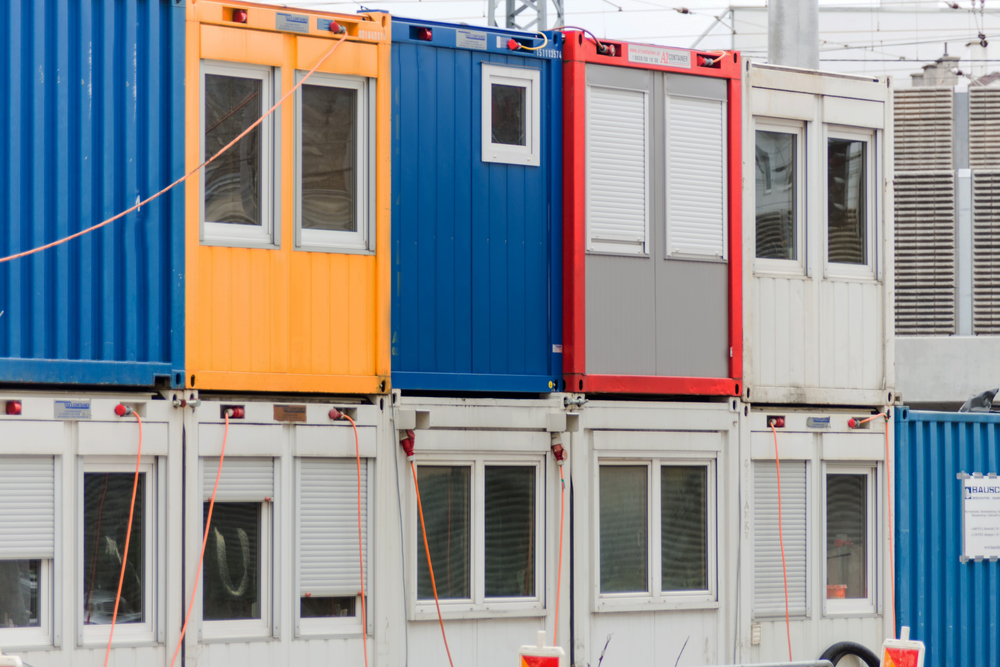7 Common Mistakes To Avoid When Building An Emergency Shelter
When the world around becomes too hostile, you will turn to an emergency shelter. This shelter could be designed to do a number of things. But be careful, you have to build it right. Check out these common mistakes in building one to avoid them.
Pitfalls in Building an Emergency Shelter
In a wilderness survival situation, an emergency shelter is designed to keep you out of the elements and alive. In civil unrest or cataclysmic natural disaster, an emergency shelter might protect you.
An emergency shelter can keep you alive in the worst-case scenarios. If you are overwhelmed by threats, this shelter can be just what you need. If it is outfitted properly and you are prepared to live inside of it, an emergency shelter can help you through any storm.
Whether you are building an emergency shelter out of concrete or tarps and stakes, there are some common mistakes that we can all avoid. These are:
1. Burying Shipping Containers

When considering an underground emergency shelter, many people read about building a shipping container bunker. The idea is that the shipping container can be buried and will act as your own personal shelter. This is very affordable, too!
However, over time, the weight of the dirt will crush your container. And when you need it most, your underground shipping container will be more of a hazard than anything else.
2. Not Testing Out Bunker Living
If you plan on living out the apocalypse in a bunker, you should know what that looks like. Most people assume they are going to be able to simply head down into the bunker and sit there, with family, for months at a time.
Now that we have spent 2 months with our family, I think it’s clear that bunker living might not be as easy as you think. You need to spend a weekend together in your bunker because when you lock that door to the above world, things get real.
3. Not Identifying Threats
Whether your emergency shelter is going to protect you from the cold and snow in a wilderness survival situation or from nuclear fallout, you need to be sure that your shelter is designed for the threats. Construct it for the threat it will face. Otherwise, it will not be sufficient.
4. One Way In and Out
View this post on Instagram
When designing and building an underground emergency shelter, you should plan to have more than one way in and one way out. What happens if a tree or something massive falls on your one door in and out? You are now in a starving chamber.
What if hostile people find the door to your emergency shelter? They are going to bring violence into your shelter.
5. Not Establishing the Best Location
Is the best location for your shelter under your home, in your yard, on your property, or on another piece of property altogether? The reality of this question is that it’s up to you. However, you should do some location planning.
One big mistake people make is that they simply place a shelter without establishing the best location for that shelter.
6. It’s Too Big
In the world of wilderness shelter building, it is common for people to concern themselves with things like space. Building a wilderness shelter is less about living inside it and more about keeping warm.
The larger the area, the harder it is to heat and to keep warm. So don’t make the mistake of building a wilderness survival MANSION! The smaller and simpler the shelter, the easier to survive.
7. Lack of Condensation
View this post on Instagram
All that breath must go somewhere! If you are seeking shelter in an emergency tent or tarp shelter, you will quickly come to find that condensation from your breath collects quickly. You do not want that condensation to make you damp or else you will be dealing with a life-threatening situation.
Moisture is the enemy in a wilderness survival situation. Be sure you create some kind of outlet for condensation in your emergency shelter. This could be a little hole or vent in your shelter to let that condensation out.
Doing It Right!
Whether you are planning on building a doomsday bunker in the backyard or just packing an emergency shelter for a hiking trip, you need to have an option for surviving the unexpected. If you had to build a house, there is a good chance that you would make some mistakes, right?
Use the advice above to avoid some costly mistakes in your own shelter building experience. Remember, your life could depend on these types of shelters. Take your time. It’s a measure twice, cut once mindset.
We are entering a time where both the long-term underground survival shelter, and the emergency wilderness survival shelter could be more important!
As a prepper, do you already have an emergency shelter? Do tell us more about it in the comments section!
Up Next:
- Emergency Shelter DIY | Basic Survival Skills
- How To Create A Wilderness Dugout Survival Shelter | Survival Life
- How To Build A Wickiup Survival Shelter



